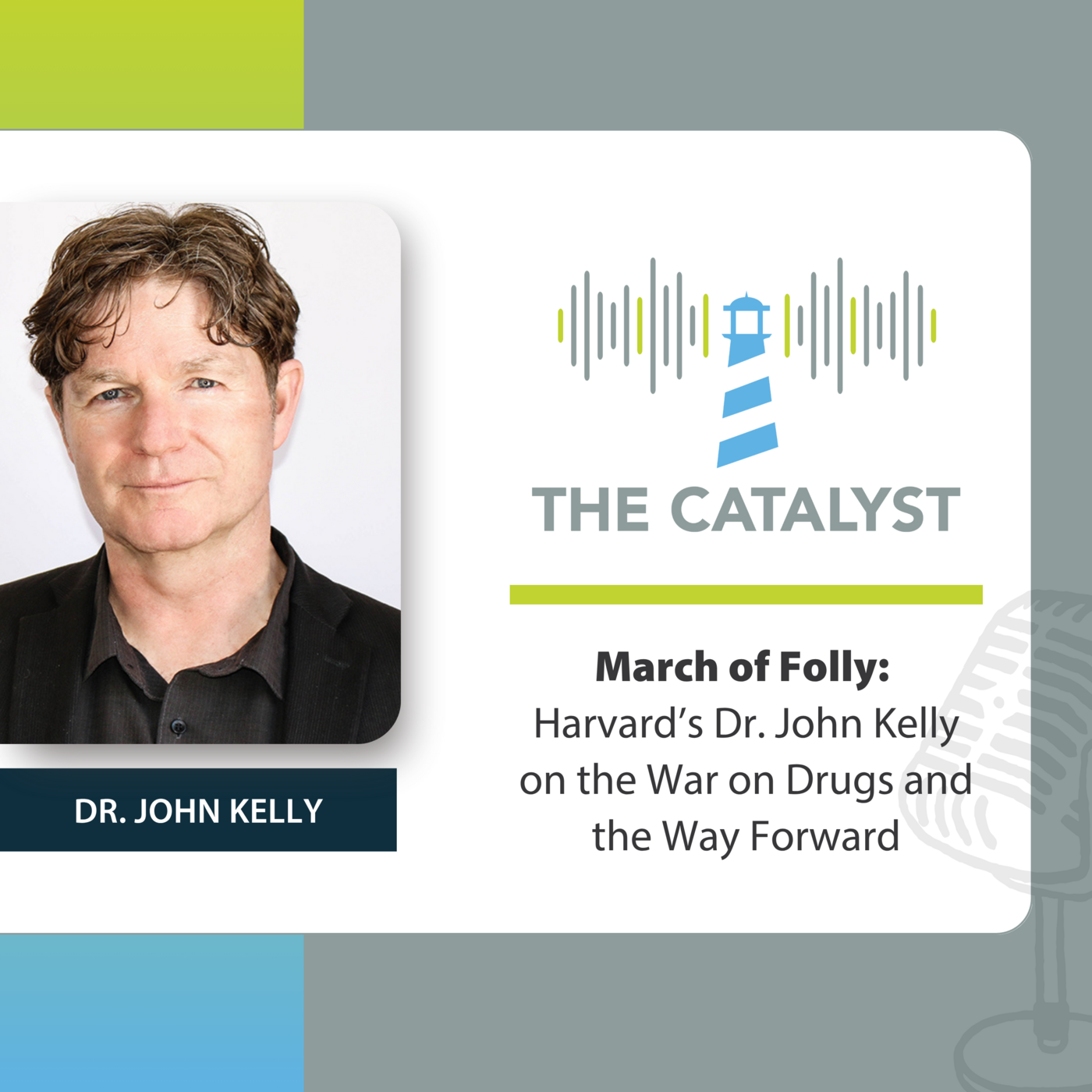From "What’s Wrong" to "What Happened": the Efficacy of Trauma-Informed Treatment
Shining a light on integrated care to promote mastery and unlock human potential.
When it comes to adolescents and young adults struggling with substance use, the question shouldn’t be “what’s wrong with them,” but rather, what happened to them? That simple shift in perspective lies at the heart of trauma-informed care (TIC) — a framework that’s proving essential for making sense of the ongoing crisis of youth substance use disorders (SUDs).
An eye-opening study titled “Needs, Services Received, and Outcomes of Adolescents and Young Adults in Substance Use Disorder (SUD) Treatment”* sheds light on just how deeply trauma and adversity are woven into the lives of young people entering SUD treatment — and how our systems must evolve to respond not with judgment, but with understanding, safety, and support. The data in the article below was pulled from this important study.
The Big Picture: Substance Use Is Widespread, But Treatment Is Rare
Among U.S. youth, substance use is far from rare. By 2015, 16% of adolescents (ages 12–17) and a staggering 63% of young adults (18–25) had reported using alcohol or drugs. And yet, despite this high prevalence, only a small fraction ever receives formal treatment.
The consequences of delayed or absent care are enormous. Starting substance use before age 15 — a common pattern among those studied — is linked to more severe addiction and worse long-term outcomes. But what's often missing from these discussions is the why: Why do so many young people turn to substances in the first place?
The Trauma Connection: 6 in 10 Have Been Victimized
One of the most striking findings in the study — which examined over 16,000 adolescents and young adults in 208 SAMHSA-funded treatment programs — is the widespread experience of trauma. Roughly 61% had experienced victimization, from abuse to violence, a rate far higher than in the general population.
Trauma changes brain development, undermines emotional regulation, and increases vulnerability to risky behavior, including substance use. Trauma-informed care doesn’t just acknowledge this; it centers it.
Instead of pathologizing behaviors, TIC asks: How is this young person trying to cope? What have they survived? This reframing allows providers to understand substance use not simply as a symptom, but as a strategy for survival and a method of self-medication.
Complex, Overlapping Challenges
The youth in this study didn’t just struggle with substance use. Co-occurring mental health conditions like depression, anxiety, ADHD, and conduct disorders were the norm, not the exception. Over 60% reported internalizing or externalizing symptoms, and many faced challenges with school, employment, or the law.
Girls and racial or ethnic minority youth were less likely to receive treatment, despite having high levels of need, a clear sign of the need for more outreach and individualized care.
Justice System Referrals: A Red Flag for Re-Traumatization
Most of the youth in this study were referred to treatment by the juvenile justice system, not by schools, families, or healthcare providers. That alone is telling. It suggests that many young people are only getting help after they've already been punished or criminalized for behaviors rooted in pain.
Trauma-informed care highlights the risk of re-traumatization in such settings. When young people are funneled into treatment through coercive systems — often with little attention to their emotional safety — the message can feel less like healing and more like punishment dressed up as care.
The Right Level of Care Matters
While the most severe cases were referred to high-intensity treatment, the study warns that mismatching treatment levels can backfire. Over-treating lower-severity cases in intensive settings can be overwhelming — even damaging — especially for youth with trauma histories.
TIC urges providers to strike a balance between clinical needs and emotional safety. Overcrowded group settings, aggressive confrontation, or rigid rules can mirror earlier traumatic experiences, especially for survivors of abuse or neglect.
A Call for Early, Integrated, Individualized Care
The takeaway is clear: Adolescents and young adults in SUD treatment have complex, overlapping, and deeply personal needs. Trauma-informed care isn’t a bonus — it’s a necessity.
What does that look like in practice?
Early identification before crisis or criminalization
Comprehensive assessments that go beyond substance use to explore emotional, psychological, and social history
Culturally sensitive, developmentally appropriate treatment
Cross-system collaboration, especially between schools, healthcare, and justice systems
Peer and recovery support services that affirm strengths, not just treat symptoms
Perhaps most importantly, trauma-informed care pushes us toward a strength-based model of healing. It's not just about understanding the damage — it's about recognizing the resilience.
That’s why TIC encourages providers to ask not just “what happened to you,” but also: What are your strengths? What relationships, hopes, and inner resources can be nurtured to support long-term recovery?
Conclusion: Changing the Frame, Changing the Future
The youth in this study are not broken. They are navigating a complex web of trauma, systemic barriers, and developmental challenges. And they’re doing it during some of the most vulnerable years of their lives.
With a trauma-informed approach, we stop punishing pain and start promoting healing. We see young people not as problems to be fixed, but as humans to be understood — and supported — in their journey toward recovery.
*Baumer, P. C., Dennis, M. L., & Estrada, B. (2018). Needs, services received, and outcomes of adolescents and young adults in substance use disorder (SUD) treatment. In C. G. Leukefeld, T. P. Gullotta, & M. Staton-Tindall (Eds.), Adolescent substance abuse: Evidence-based approaches to prevention and treatment (pp. 67-139). Springer International Publishing.
Register now for the Police, Treatment, and Community Collaborative (PTCC) annual conference!
Registration is now open for the Police, Treatment, and Community Collaborative (PTCC) International Deflection & Pre-Arrest Summit, which will be held December 2-4, 2025 in New Orleans, LA. The call for presentations is still open, but will close soon on June 13. More information is available at: https://ptaccollaborative.org/2025-summit/. Specific topics of interest include innovative treatment programs, successful collaboration models, and strategies for supporting at-risk youth.
The Catalyst Podcast
March of Folly: Harvard's Dr. John Kelly on the War on Drugs and the Way Forward
For over 50 years, America’s “war on drugs” has been a war with disastrous unintended consequences. Framed as a battle to be won, it reshaped addiction not as a public health crisis but as a moral and criminal one. This rhetoric didn’t just stigmatize millions — it fundamentally altered the course of treatment and recovery for decades.
Catalyst Poll
Chestnut Health Systems’ Lighthouse Institute is recruiting Emerging Adults (18-26 years old) facing challenges related to substance use, along with their parents, for a paid research study seeking feedback for a new recovery program called Launch. Participating families will receive Launch services at no cost, be compensated for virtual research visits, and there is no waitlist! Call or Text Alice Dawson today (541-251-8507) or fill out the form on the Launch Website for more information.
We scour all four corners of the Internet to bring you the week’s most insightful, relevant, and actionable articles, studies, and reports.
Adverse childhood experiences and level of self-esteem as predictors for motivation to change among adults with methamphetamine use residing in rehabilitation centers. These findings highlight the need for trauma-focused interventions. Source: BMC Psychology
Empowering Patients to Stay Active in Substance Use Recovery. When working with high-functioning patients navigating substance use disorder (SUD), long-term recovery strategies, active patient engagement, and a nonjudgmental approach to relapse are crucial. Source: AJMC
How global research is making a real difference in local communities. Inexpensive, scalable interventions for mental and behavioral health are increasingly important amid worsening humanitarian crises and deep cuts in U.S. funding for global health. Source: American Psychological Association
Researchers find that peer influence drives youth vaping epidemic… Young people with friends who vape are 15 times more likely to use e-cigarettes, and more adolescents are turning to illicit cannabis products. Source: Medical Xpress
Assessing social media harm in teens… Rising numbers of parents (55%) and teens (35%) report serious concerns about adolescent mental health. Girls are more likely to report social media harm—25% say it negatively affects their mental health, versus 14% of boys. Source: telehealth.org
Time to update diagnostic criteria for eating disorders. This new research suggests that the current diagnostic criteria for eating disorders fail to capture a broad range of weight-loss behaviors characteristic of anorexia nervosa, bulimia nervosa, and binge eating that are not captured by current diagnostic criteria. Source: Medscape
Exercise proves to boost kids’ mental health. Senior researcher, Prof Carol Maher, says these findings reiterate the importance of exercise for youth mental health. Source: Neuroscience News
Health and economic outcomes of providing housing to homeless adults with OUD. This study assesses the costs and health outcomes of providing stable housing to PEH who have opioid use disorder (OUD). Source: JAMA
Israeli's substance abuse increases since Oct. 7, Hamas and Iran wars. Those exposed directly to the trauma of October 7 – evacuees, survivors, soldiers, families – are far more likely to turn to substances to manage anxiety, insomnia, and emotional distress. Source: The Jerusalem Post
New York State Department of Health Releases Report on Adult Cannabis Use. This brief offers insight into how many adults aged 18 and older report consuming cannabis, how they consume it, as well as demographic data to help inform the State Health Department about the overall impact on the health of New Yorkers. Source: New York Department of Health
About Chestnut Health Systems’ Lighthouse Institute
Chestnut Health Systems’™ Lighthouse Institute was established in 1986. Our mission is to help practitioners improve the quality of their services through research, training, and publishing. Serving health and human service organizations through offices in Chicago and Bloomington/Normal, Illinois, and Eugene, Oregon, Lighthouse Institute staff conduct applied research, program evaluation, training, and consultation.
Lighthouse Institute publishes books, monographs, curricula, and manuals on various issues of behavioral health, education, and program management. Institute staff have backgrounds and expertise in addictions, business, education, management information systems, psychology, public health, rehabilitation, research methods, statistics, and social work. For more, visit https://www.chestnut.org/lighthouse-institute/








